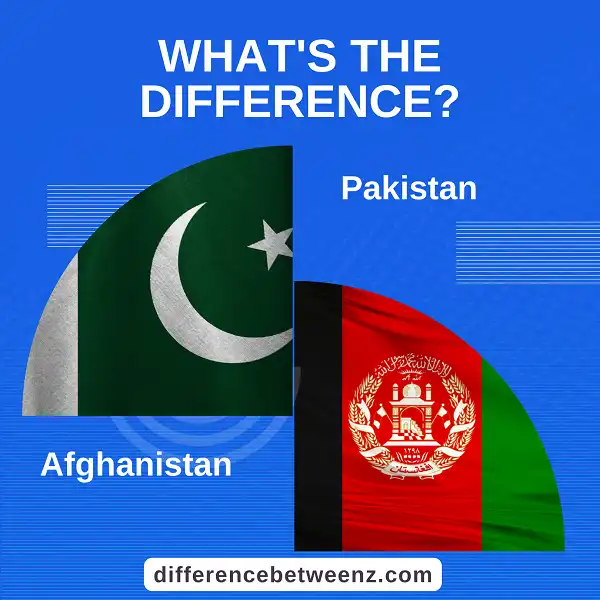Pakistan and Afghanistan are two countries that are located on either side of the Durand Line, which is a border that separates them. While there are many similarities between the two countries, there are also some key differences. In this blog post, we will explore some of those differences.
What is Pakistan?
Pakistan is a Lower Middle Income Country (LMIC) with a population of over 207 million people, making it the world’s sixth most populous nation.
- Pakistan is bordered by the India-administered Kashmir to the east, Afghanistan to the northwest, and the nation of Iran and the whole of Balochistan to the west.
- With an area of 796,095 square kilometers, Pakistan is slightly less than three times the size of California. The Pakistani economy has been through different phases of development since its inception in 1947. Pakistan is an agricultural country where cotton and Pakistan’s other crops are grown on the Indus River plain.
- Wheat, sugarcane, vegetables, and fruits are also cultivated. Pakistan exports textiles, rice, fish, fruits, and minerals. Tourism also plays an important role in Pakistan’s economy although it has been adversely affected by political instabilities and security concerns in recent years.
What is Afghanistan?
Afghanistan is a landlocked country located in Central Asia. The country is bordered by Iran to the west, Pakistan to the south and east, and Turkmenistan, Uzbekistan, and Tajikistan to the north. Afghanistan has a population of around 32 million people, and its capital city is Kabul. Afghanistan is home to a number of different ethnic groups, including Pashtuns, Tajiks, Hazaras, Uzbeks, and Turkmen.
- The official languages of Afghanistan are Dari and Pashto, but many Afghan people also speak English or Russian. The currency of Afghanistan is the Afghan afghani. Afghanistan has a long history and was once part of the Persian Empire. In the 1800s, the country was invaded by Britain and Russia, and it eventually became a British protectorate.
- Afghanistan gained independence from Britain in 1919, but it was invaded by the Soviet Union in 1979. After a decade of fighting, the Soviets withdrew from Afghanistan in 1989. In the 1990s, Afghanistan descended into civil war, as various factions fought for control of the country.
- In 2001, the United States launched a military intervention in Afghanistan following the 9/11 attacks. NATO forces have also been deployed to Afghanistan as part of the International Security Assistance Force (ISAF). Currently, there are around 14,000 NATO troops stationed in Afghanistan.
Differences between Pakistan and Afghanistan
Pakistan and Afghanistan share a long history and many cultural similarities, but there are also significant differences between the two countries.
- Pakistan is a mainly Muslim country with a population of over 200 million, while Afghanistan is predominantly Buddhist with a population of around 30 million.
- Pakistan is located in southern Asia and has a coastline on the Arabian Sea, while Afghanistan is landlocked in central Asia.
- Pakistan is a federal republic with a parliamentary democracy, while Afghanistan is an Islamic republic with a presidential system.
- Pakistan’s economy is mainly based on agriculture and manufacturing, while Afghanistan’s economy is based on agriculture and tourism.
Pakistan and Afghanistan have different languages, religions, and political systems, but they are both developing countries with rich cultures and histories.
Conclusion
Pakistan and Afghanistan are two very different countries with their own unique cultures, histories, and challenges. While there are many similarities between the two nations, it is important to understand the distinctions in order to effectively develop relationships and policies with each country. It is our hope that this blog post has provided some valuable insights into the complex world of Pakistan-Afghanistan relations.


